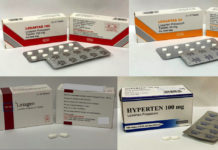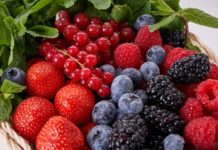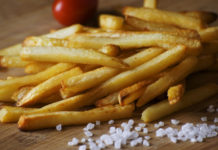
Rice is so integral to our diet that we refer to a meal as “吃饭” in mandarin, literally translated to “eat rice”. Indeed, rice is one of the most important food crops in the world. It is consumed daily by more than half of the world’s population, and is the second most cultivated grain, after wheat. Total rice consumption worldwide in 2015/2016 was 478 million metric tons, with 146 million metric tons in consumed in China alone!
Why You Should Replace White Rice With Alternatives
White polished rice is generally the preferred choice amongst Asians because it cooks quicker, is fluffier, and smells more fragrant as compared to unpolished rice. However, many do not know that it is far from being the most healthy staple food of choice.
A search on medical literature reveals some disturbing results:
- Higher consumption of white rice is associated with a significantly increased risk of type 2 diabetes, especially in Asian (Chinese and Japanese) populations. Each extra bowl of white rice per day, consumed regualry, increases your risk of diabetes by 11%.
- There is a positive association between white rice intake and risk of all overall chronic diseases in women.
- Higher consumption of white rice is a risk factor for the development of metabolic syndrome, which in turn leads to heart disease.
I always advocate consuming other grains as well as rice – it is an easy way to boost your health. Grains are commonly referred to as ‘cereal grains’. The true cereal grains are from the botanical family called ‘Poaceae’ which includes wheat, oats, rice, corn, barley, sorghum, rye, and millet. There are some ‘pseudo-cereal’ that are technically not part of the Poaceae family but are nutritionally similar – these include amaranth, buckwheat and quinoa, which, you may be surprised to learn, are actually seeds, and not grains.
Tips On Choosing Your Grains (or seeds)
With so many types of grains available in your local grocery store, it can be difficult to determine what kind of grains you should be looking out for. A good general rule is to choose whole grains over refined ones.
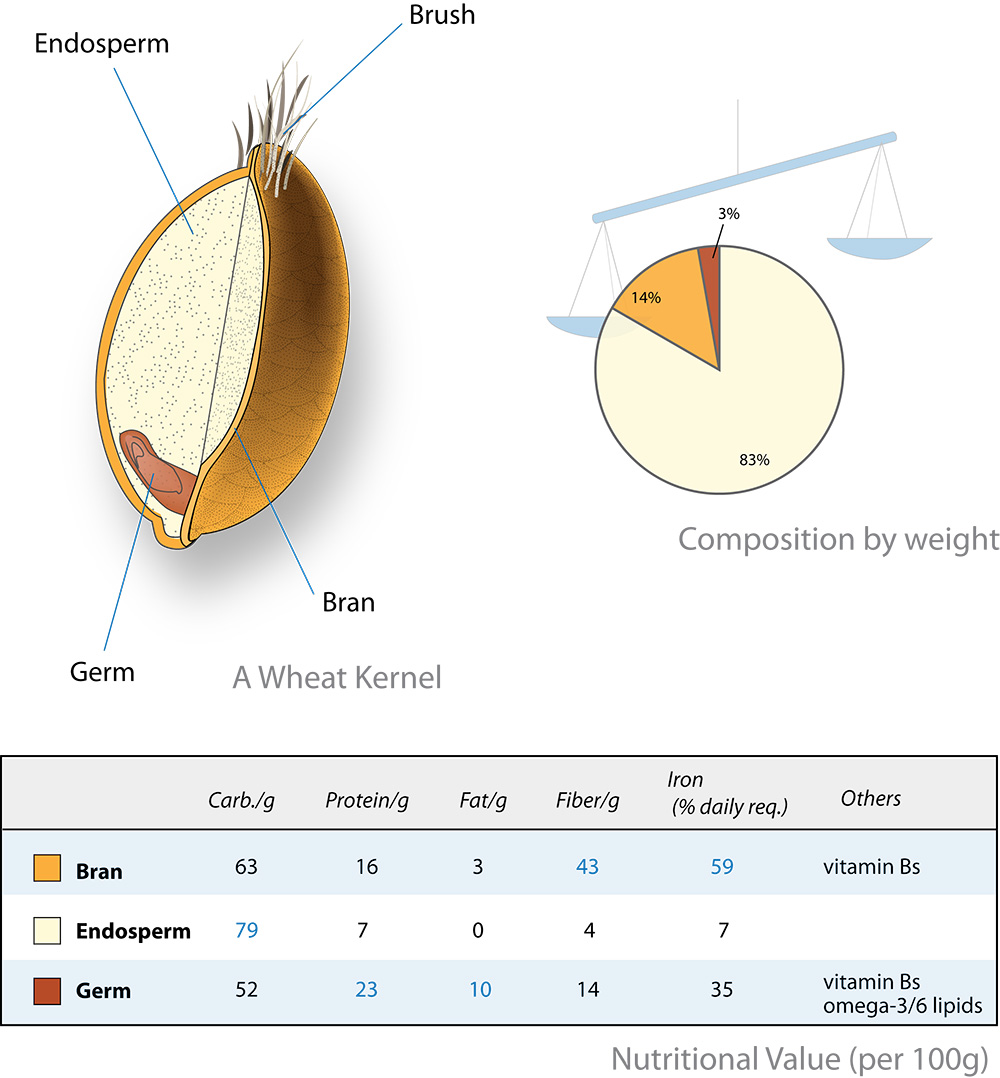
Whole grains contain all edible parts, including the bran, germ, and endosperm. The whole grain may be used intact or recombined, as long as all components are present. Refined grains, on the other hand, are processed grains that lack the bran and germ of the grain. Examples of refined non-wholegrain products are: white rice, white flour, and white bread.
We aim to make this really easy by picking out some common, affordable and versatile grains that you should be able to find if you walk into your grocery store. We will also list down some staple food that you should cut back.
If you are not the adventurous type – don’t worry – palatability has been taken into consideration when this list was developed. Of course, it helps if your culinary skills are good!
EAT MORE: Quinoa
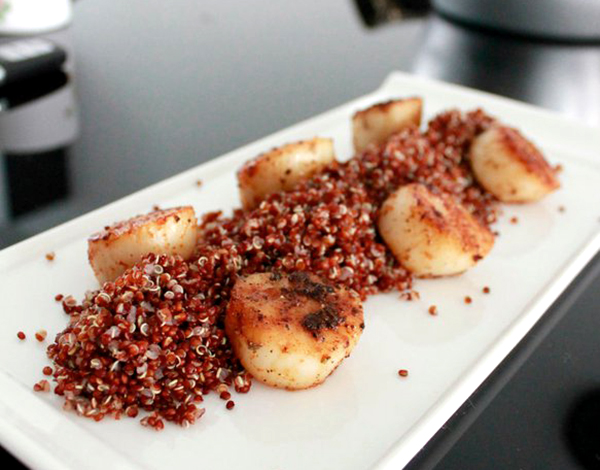
WHAT Quinoa is native to Bolivia and it belongs to the same family as spinach and beetroot. There are over 120 types of quinoa varieties known to us but the most commercialized types are white, red and black.
BENEFITS Just one cup contains 8g of protein, 5g of fiber, 15% DV iron, 30% DV magnesium, 19% DV folate and omega 3 fatty acids. Quinoa is a complete protein. Most grains, including wheat and rice are missing one or more essential amino acids, but quinoa contains all essential amino acids necessary for good health.
HOW You can cook quinoa the way you cook rice. Ratio is 1 cup of uncooked quinoa to 1.5 to 2 cups of liquid. Just bring quinoa and the liquid to a boil. Reduce heat to low, cover and simmer until tender. You can use any stock to cook the quinoa for better flavor and fragrance. You can also add diced carrots or celery for texture and color. Warning – It can be very addictive!
EAT MORE: Brown rice
 WHAT Brown rice is whole grain rice. The hull is removed because it is inedible. White rice is the same except that the hull, bran and germ are stripped off. It has a nutty flavor compared to white rice.
WHAT Brown rice is whole grain rice. The hull is removed because it is inedible. White rice is the same except that the hull, bran and germ are stripped off. It has a nutty flavor compared to white rice.
BENEFITS Brown rice is an excellent source of manganese, phosphorus, copper, magnesium and Vitamins B1, B2, B3, B6, E, and K. It is also a good source of fiber and fiber is important component to reduce the risk of colon cancer.
Brown rice is beneficial for diabetics. It has a low glycemic index (GI) which is helpful in reducing insulin surges and stabilizes blood sugar levels. It contains powerful antioxidants which protects the cells from oxidation damage. Brown rice is also helps to improve cardiovascular health, regulates cholesterol levels, and improves digestive system.
HOW It is true that brown rice takes longer to cook than its white counterpart. Brown rice can also be more temperamental, but with some experience, mastering it should be a pirce of cake. Measure out 1.5 cups of water and 1 cup rice. Put them in a pot and boil uncovered. Reduce the heat and let it simmer for 20 minutes. Turn off the heat and let it rest for another 15 minutes. You should be rewarded with fluffy and chewy rice. Use brown rice to make fried rice, the way you like it. It will taste better if you add some flavor to it, rather than eating it plain.
EAT MORE: Whole-grain pasta

WHAT Just like brown rice, whole-grain pasta contains all three layers of the wheat kernel: the bran, germ and endosperm. Whole grain pasta contains all the nutrients and natural fiber as compared to standard pasta.
BENEFITS 1 cup of whole-grain pasta contains 7.5g of protein, vitamins A, E, K, B6, thiamin, folate, riboflavin, niacin, pantothenic acid, choline, betaine, calcium, iron, magnesium, phosphorus, potassium, zinc, copper, manganese and selenium.
Health benefits you can reap from incorporating whole-grain pasta into your diet include: lower blood pressure, reduced risk of chronic diseases such as type 2 diabetes and heart diseases.
HOW It is undeniable that whole-grain pasta is not very palatable. It tends to be chewy and grainy as compared to regular pasta. However, food companies are improving the taste and texture of whole-grain pasta. It has come a long way and results have been successful.
Alternatively, if you find 100% whole-grain pasta hard to stomach, you can consider pasta that are made with a mix of whole-wheat and refined flours. The taste and texture will be closer to traditional pasta since it contains refined flours. You can give yourself some time to adjust to its texture before making the switch to whole-grain pasta.
EAT MORE: Whole grain breads
 WHAT Whole wheat bread is packed with nutrients from all three components of the wheat kernel. Be sure to read the ingredient list carefully to determine if it is made with whole-grain wheat flour or just wheat flour. Wheat flour is synonymous with refined flour – and that is not as beneficial as whole-grain wheat flour. Look out for labels that specify 100% whole wheat to reap the benefits.
WHAT Whole wheat bread is packed with nutrients from all three components of the wheat kernel. Be sure to read the ingredient list carefully to determine if it is made with whole-grain wheat flour or just wheat flour. Wheat flour is synonymous with refined flour – and that is not as beneficial as whole-grain wheat flour. Look out for labels that specify 100% whole wheat to reap the benefits.
BENEFITS Whole wheat bread is a good source of bran fiber. The bran will soften and increase the bulk of your stools, making them easier to pass through your digestive tract. With a healthy intake of fiber, it will lower your risk of suffering from irritable bowel syndrome.
Whole wheat bread also contains a lot of good compounds that can help reduce the risk of cancer, coronary heart diseases, diabetes and obesity.
HOW Whole wheat bread really isn’t too difficult to eat. Eating toasted whole wheat bread does not taste bad at all. Toast eliminates the unique fluffy, chewy texture that plain bread has. Toasting whole wheat bread makes it a whole lot more palatable.
Cut into small cubes and toast it with olive oil. Put it over pumpkin soup or French onion soup. You probably can’t tell the difference if its white or whole wheat bread.
Alternatively, you can use it to make bread and butter pudding. Soaking the bread with the custard will change the consistency and musk the taste of the bread.
EAT MORE: Corn

WHAT Widely eaten by people across the world, corn is a staple food crop grown in many countries. Although we often associate the yellow variety when we think of corn, it comes in several other varieties featuring an array of colors, including red, pink, black, blue and purple.
The most common eaten varieties are popcorn and sweet corn. However, refined corn products are also widely used as food ingredients. Some examples include polenta, cornmeal, corn flour, corn syrup, corn oil, and tortillas.
BENEFITS There are several anti-oxidant benefits you can derive from all varieties of corn. However, recent studies have indicated that different varieties have different anti-oxidant benefits from the combination of phytonutrients. For example, the yellow variety has high concentrations of lutein and zeaxanthin. In the case of the blue variety, it’s the anthocyanins. Recent studies have shown that the anti-oxidant activity of the purple variety is comes from hydroxybenzoic acid.
Corn is also a good source of fiber. Corn has the ability to be metabolized by our intestinal bacteria and form short chain fatty acids (SCFAs). This process encourages the growth of useful bacteria in our large intestines and you lower the risk of developing colon cancer.
Corn has long been associated with better control of blood sugar in both type 1 and type 2 diabetes. Packed with fiber, vitamin B-complex including B1, B5 and folic acid, it prevents raid digestion of food, thus stopping rapid uptake of sugar into bloodstream.
Unlike many other foods that will lower its efficacy and drastically reduce its anti-oxidant benefits, studies have shown that exposing corn to temperatures as high as 65-93 degrees celsius does not significantly lower corn’s anti-oxidant capacity.
HOW Corn is generally sweet-tasting and easy on the palate. With its sweet taste and generally neutral smell, it can be added to a variety of dishes to make them more visually stunning, including salad, Asian stir-fry dishes, side dish in western food, or even popcorn (without the butter, sugar and salt, of course!).
EAT LESS: Refined grains and all things made with white flour
Refined grains include white rice, white bread, regular pasta, cookies, cakes and everything else that uses white refined flour. During the refining process, the bran and germ are removed from the whole grain, leaving only the endosperm. The endosperm is mainly made of starchy carbohydrates and has little nutritional value.
Although it is a requirement by law in some countries to add iron and a handful of vitamin B to the refined grains, these are only a very small amount compared to what was initially stripped off from the whole grains.
Refined white grains are digested very quickly into simple sugars and absorbed into your bloodstream. This causes blood sugar levels to spike quickly. The rapid spike and drop in blood sugar levels can make a person feel lethargic and drained.
Diet high in refined grains can contribute to increased inflammation in your body and increase risks of heart diseases and obesity because they are not as filling as whole grain, so people tend to overeat.
MODERATION IS THE KEY
It is very difficult to change your diet overnight. The key is to start slow – for example, mixing brown rice with white rice; or switching from white to wholemeal bread. Start with one meal, then increase it to 2, or even 3. With some innovative ideas (and good culinary skills!), it is really not too difficult to introduce whole grains to your diet.
Give it a try today and start noticing the amazing things that will happen to your body!





